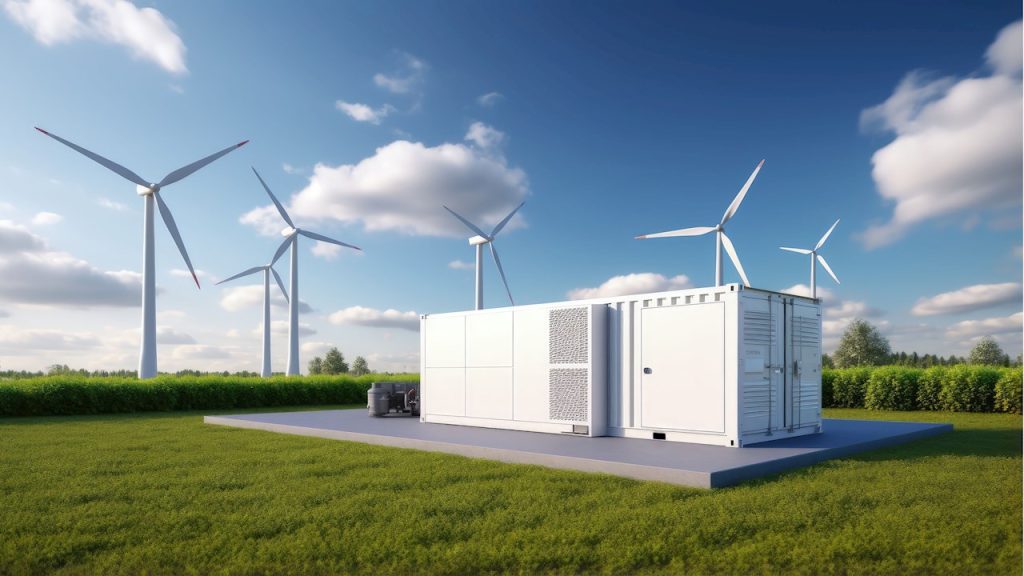Oman’s ambitious plan to reduce oil’s GDP contribution from 39% to 8.4% by 2040 faces a critical storage optimization challenge where pumped hydro with battery systems achieves 40% renewable penetration at $570,000 daily costs—16% below the baseline fossil fuel system—while pure battery storage reaches 105% of baseline costs at $715,000 daily. This cost differential emerges as the Sultanate targets 30% renewable electricity by 2030 through 2,300 MW of planned solar and wind capacity, yet faces grid stability constraints that limit renewable penetration to just 28.65% without adequate storage infrastructure.
The economic implications become stark when examining storage technology performance across Oman’s projected energy transition timeline. Research conducted on IEEE test systems reveals that hybrid pumped hydro-battery configurations deliver the lowest total daily costs while achieving targeted renewable penetration levels, contrasting sharply with battery-only systems that require 175% storage capacity relative to renewable generation due to their limited 2-hour supply duration.
Technical Constraints and Grid Integration Realities
Oman Electricity Transmission Company’s integration of large-scale projects, including the 500 MW Ibri II Solar IPP, alongside expansions in Manah (1,000 MW), Ibri III (500 MW), and A’Kamil (500 MW) creates unprecedented grid stability challenges. The displacement of conventional synchronous generators reduces system inertia while introducing intermittency that current transmission infrastructure cannot fully accommodate without storage intervention.
Modeling based on realistic Omani load profiles demonstrates that renewable energy curtailment reaches 1,802 MWh daily when renewable capacity exceeds grid absorption capabilities. This curtailed energy, equivalent to 37 tonnes of potential green hydrogen production daily, represents lost economic value that storage systems can recover while supporting grid stability requirements.
The constraint analysis reveals transmission line security limits at 70% capacity create bottlenecks that prevent higher renewable penetration without storage buffering. These operational limits reflect conservative grid management practices necessary to maintain N-1 security standards, yet create economic inefficiencies where available renewable capacity remains unutilized during peak generation periods.
Storage Technology Economics and Scalability Assessment
Pumped hydro systems demonstrate superior economic performance due to extended supply duration capabilities—typically 6-10 hours compared to battery systems’ 2-hour limitation. This duration advantage reduces required storage capacity from 175% for batteries to approximately 49% for pumped hydro at 40% renewable penetration, creating substantial capital cost savings that compound over system lifetimes.
The levelized cost of storage (LCOS) analysis reveals pumped hydro daily costs of $220,000 compared to battery costs of $360,000 for equivalent renewable integration performance. However, pumped hydro systems exhibit higher operational losses (440 MWh vs 140 MWh for batteries), creating trade-offs between capital efficiency and operational optimization that favor pumped hydro in long-duration applications.
Compressed Air Energy Storage (CAES) systems demonstrate intermediate performance but fail to achieve 40% renewable penetration within current renewable capacity constraints, reaching maximum penetration levels of 38%. This limitation suggests CAES technology requires additional renewable investment to become viable for Oman’s transition targets, creating uncertainty about its role in the optimal storage portfolio.
Green Hydrogen Production Integration and Revenue Opportunities
The integration of electrolyzer systems with 70% efficiency enables conversion of excess renewable generation into green hydrogen, providing additional revenue streams while supporting renewable utilization beyond direct electrical consumption. Battery storage systems enable the highest hydrogen production at 12 tonnes daily due to lower storage losses, while pumped hydro systems produce 4-5 tonnes daily at 40% renewable penetration.
This hydrogen production capability addresses Oman’s goal to scale clean hydrogen from current levels to 1 million tonnes annually by 2030, positioning energy storage as critical infrastructure for both grid stability and hydrogen economy development. The economic value of hydrogen production, however, depends on market prices and export infrastructure development that remain uncertain in current projections.
The electrolyzer integration creates operational complexity where storage systems must balance competing demands for renewable energy utilization: immediate grid services versus hydrogen production for future revenue. This optimization challenge requires sophisticated control systems that can respond to real-time grid conditions while maximizing economic returns from available renewable generation.
Policy Framework and Investment Implications
Oman’s renewable energy sector GDP contribution growth from 2.2% in 2020 to 2.5% in 2024 provides insufficient momentum to achieve 2030 targets without accelerated storage deployment. The current investment level of RO 2.837 billion across regulated sectors may prove inadequate given the substantial storage infrastructure requirements revealed through technical analysis.
The Authority for Public Services Regulation’s 30% renewable capacity target by 2030 requires careful coordination between generation and storage investments to avoid stranded assets or operational constraints. The analysis suggests that storage investment decisions made today will determine whether Oman can achieve cost-effective renewable integration or face higher transition costs due to sub-optimal technology selection.
The comparative analysis of storage technologies under Omani conditions provides crucial insights for policymakers balancing economic efficiency with technical reliability. While pumped hydro with battery hybrid systems offer optimal economic performance, their implementation requires specific geographical and infrastructure conditions that may not be available across all planned renewable development sites.
The research demonstrates that energy storage technology selection significantly impacts the economic viability of renewable energy transitions, with daily cost variations of $145,000 between optimal and sub-optimal storage configurations. This cost sensitivity suggests that detailed techno-economic analysis should precede large-scale storage procurement decisions, particularly given the long operational lifetimes and substantial capital requirements of utility-scale storage systems. As Oman advances toward its 2040 diversification goals, storage optimization becomes critical infrastructure planning that determines both the pace and cost-effectiveness of the energy transition.
